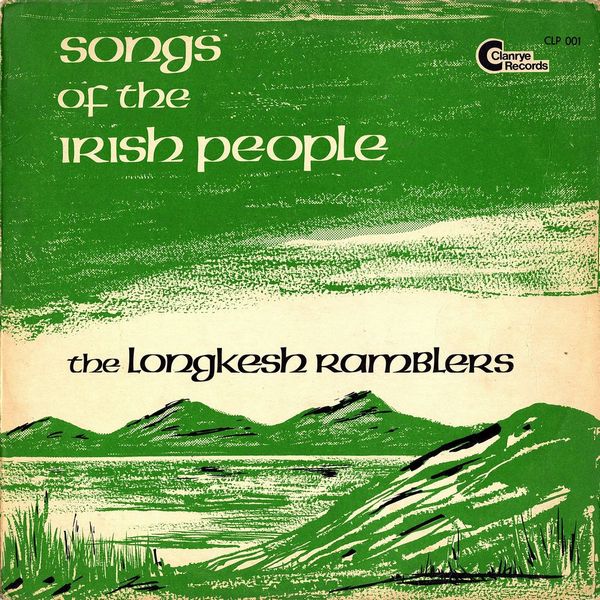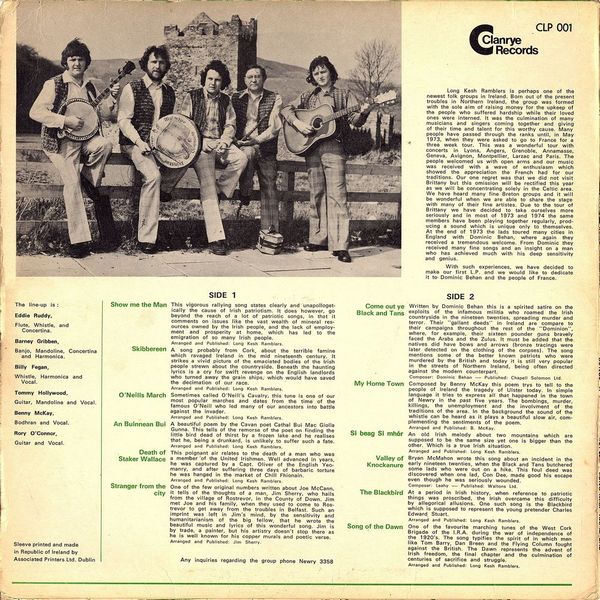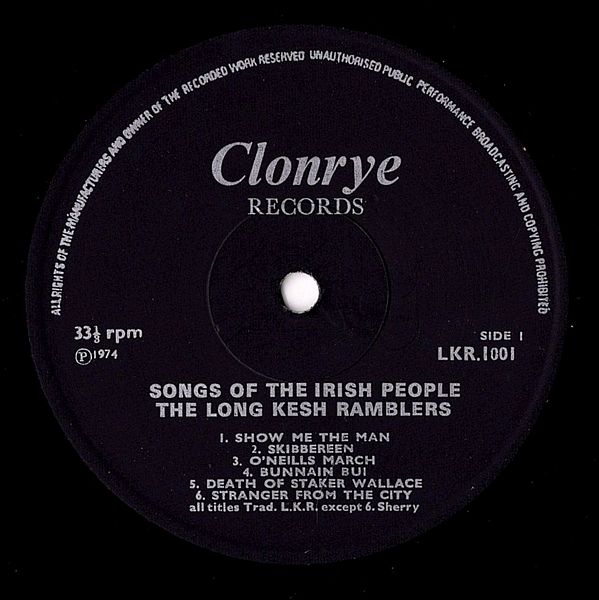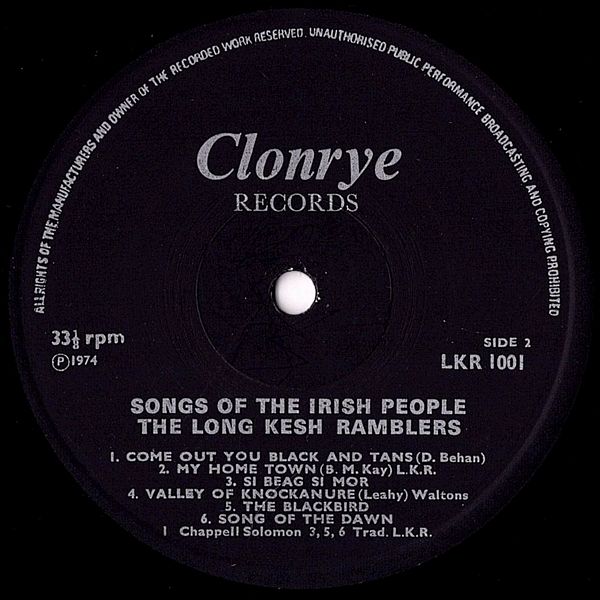
 |



|
Sleeve Notes
Long Kesh Ramblers is perhaps one of the newest folk groups in Ireland. Born out of the present troubles in Northern Ireland, the group was formed with the sole aim of raising money for the upkeep of the people who suffered hardship while their loved ones were interned. It was the culmination of many musicians and singers coming together and giving of their time and talent for this worthy cause. Many people have passed through the ranks until, in May 1973, when they were asked to go to France for a three week tour. This was a wonderful tour with concerts in Lyons, Angers, Grenoble, Annamasse, Geneva, Avignon, Montpellier, Larzac and Paris. The people welcomed us with open arms and our music was received with a wave of enthusiasm which showed the appreciation the French had for our traditions. Our one regret was that we did not visit Brittany but this omission will be rectified this year as we will be concentrating solely in the Celtic area. We have heard many fine Breton groups and it will be wonderful when we are able to share the stage with many of their fine artistes. Due to the tour of Brittany we have decided to take ourselves more seriously and in most of 1973 and 1974 the same members have been playing together regularly, producing a sound which is unique only to themselves. At the end of 1973 the lads toured many cities in England with Dominic Behan, where again they received a tremendous welcome. From Dominic they received many fine songs and an insight on a man who has achieved much with his deep sensitivity and genius.
With such experiences, we have decided to make our first L.P. and we would like to dedicate it to Dominic Behan and the people of France.
Show me the Man: This vigorous rallying song states clearly and unapologetically the cause of Irish patriotism. It does however, go beyond the reach of a lot of patriotic songs, in that it comments on issues like the vast wealth of mineral resources owned by the Irish people, and the lack of employment and prosperity at home, which has led to the emigration of so many Irish people.
Skibbereen: A song probably from Cork, about the terrible famine which ravaged Ireland in the mid nineteenth century. It strikes a vivid picture of the emaciated bodies of the Irish people strewn about the countryside. Beneath the haunting Lyrics is a cry for swift revenge on the English landlords who turned away the grain ships, which would have saved the decimation of our race.
O'Neills March: Sometimes called O'Neill's Cavalry, this tune is one of our most popular marches and dates from the time of the famous O'Neill who led many of our ancestors into battle against the invader.
An Buinnean Bui: A beautiful poem by the Cavan poet Cathal Bui Mac Giolla Gunna. This tells of the remorse of the poet on finding the little bird dead of thirst by a frozen lake and he realises that he, being a drunkard, is unlikely to suffer such a fate.
Death of Staker Wallace: This poignant air relates to the death of a man who was a member of the United Irishmen. Well advanced in years, he was captured by a Capt. Oliver of the English Yeomanry, and after suffering three days of barbaric torture he was hanged in the market of Chill Fhionain.
Stranger from the city: One of the few original numbers written about Joe McCann, it tells of the thoughts of a man, Jim Sherry, who hails from the village of Rostrevor, in the County of Down. Jim met Joe and his family, when they used to come to Rostrevor to get away from the troubles in Belfast. Such an imprint was left in Jim's mind, by the sensitivity and humanitarianism of the big fellow, that he wrote the beautiful music and Lyrics of this wonderful song. Jim is by trade, a painter, but his artistry doesn't stop there as he is well known for his copper murals and poetic verse.
Come out ye Black and Tans: Written by Dominic Behan this is a spirited satire on the exploits of the infamous militia who roamed the Irish countryside in the nineteen twenties, spreading murder and terror. Their "gallant deeds" in Ireland are compare to their campaigns throughout the rest of the "Dominion", where, for example, their sixteen pounder guns bravely faced the Arabs and the Zulus. It must be added that the natives did have bows and arrows (bronze tracings were later detected on the clothing of the corpses). The song mentions some of the better known patriots who were murdered by the British and today it is still very popular in the streets of Northern Ireland, being often directed against the modern counterpart.
My Home Town: Composed by Benny McKay this poem trys to tell to the people of Ireland the tragedy of Ulster today. In simple language it tries to express all that happened in the town of Newry in the past five years. The bombings, murder, killings, the unemployment and the involvment of the traditions of the area. In the background the sound of the whistle can be heard as it plays a beautiful slow air, complementing the sentiments of the poem.
Si beag Si mhór: An old Irish melody about two mountains which are supposed to be the same size yet one is bigger than the other. Which is a true Irish situation.
Valley of Knockanure: Bryan McMahon wrote this song about an incident in the early nineteen twenties, when the Black and Tans butchered some lads who were out on a hike. This foul deed was discovered when one lad, Con Dee, made good his escape even though he was seriously wounded.
The Blackbird: At a period in Irish history, when reference to patriotic things was proscribed, the Irish overcame this difficulty by allegorical allusions. One such song is the Blackbird which is supposed to represent the young pretender Charles Edward Stuart.
Song of the Dawn: One of the favourite marching tunes of the West Cork Brigade of the I.R.A. during the war of independence of the 1920's. The song typifies the spirit of in which men like Tom Barry, Dan Breen and the Flying Column fought against the British. The Dawn represents the advent of Irish freedom, the final chapter and the culmination of centuries of sacrifice and struggle.